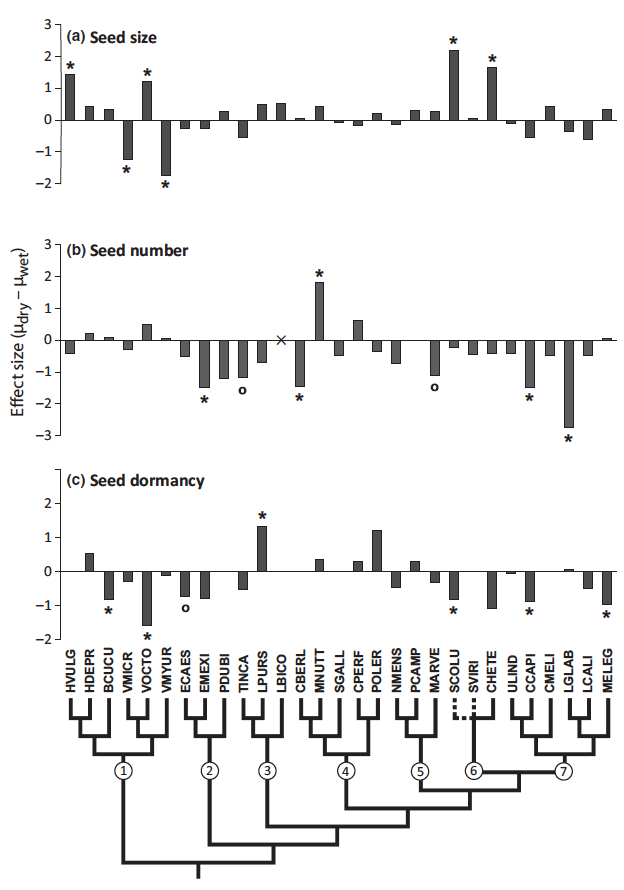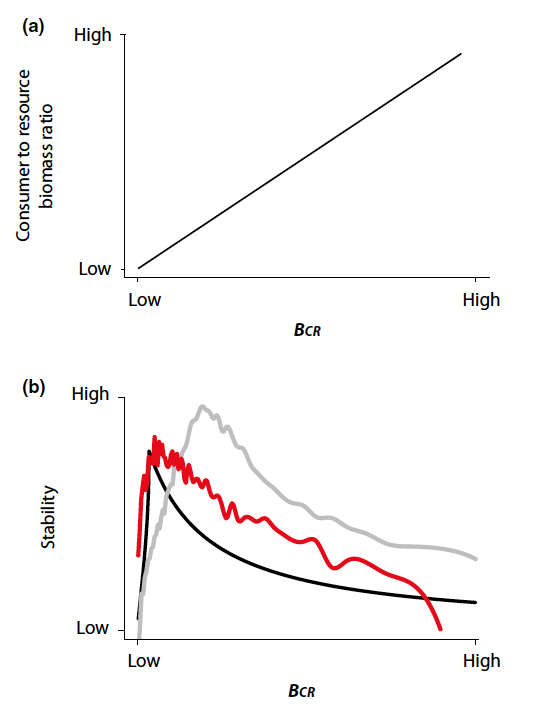Gilbert lab publishes two papers in Ecology Letters
Hidden responses to environmental variation: maternal effects
reveal species niche dimensions
Ecology Letters, (2014) 17: 662–669 doi: 10.1111/ele.12267 (pdf)

Figure 1 Effect sizes of (a) seed size, (b) seed number and (c) seed dormancy responses to our watering treatments across a phylogeny of 29 species; see Table S1 for species codes. Effect sizes were calculated using Cohen’s d (i.e. [ldrylwet]/pooled r; Hartung et al. 2011). Positive effect sizes indicate that trait values were higher in the dry compared to wet environment, and vice versa. The numbers on the phylogeny correspond to taxonomic orders: (1) Poales, (2) Ranunculales, (3) Fabales, (4) Caryophyllales, (5) Boraginales, (6) Lamiales and (7) Asterales. Dashed branches represent unknown relationships due to missing sequence data [SCOLU and SVIRI], and ‘9’ indicates unavailable trait data rather than a true zero. *P html5-dom-document-internal-entity1-lt-end 0.05, ºP html5-dom-document-internal-entity1-lt-end 0.10.
A bioenergetic framework for the temperature dependence of trophic interactions
Ecology Letters, (2014) 17: 902–914 doi: 10.1111/ele.12307 (pdf)

Figure 2 Relationship between BCR, the consumer to resource biomass
ratio (a) and three measures of stability (b). The C:R biomass ratio
increases monotonically with BCR (a), whereas stability shows a bidirectional
response (b). Stability increases initially, but strengthening
interactions beyond a critical point causes destabilisation….
